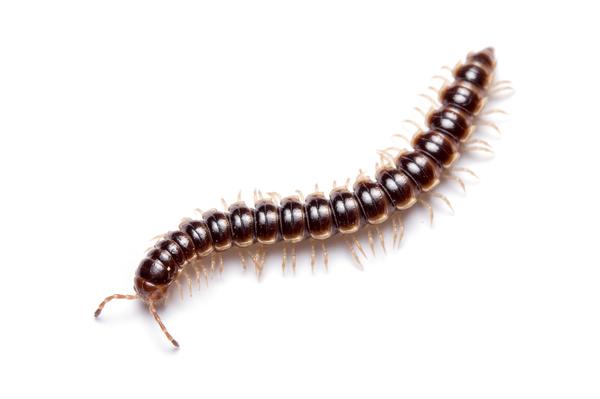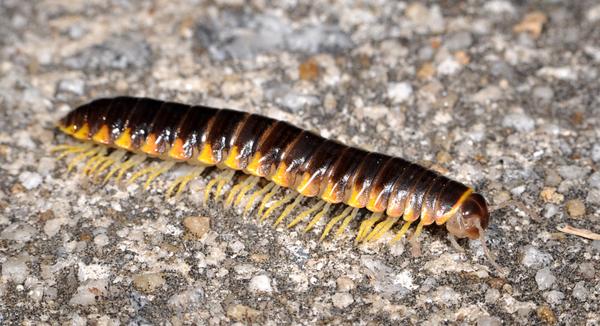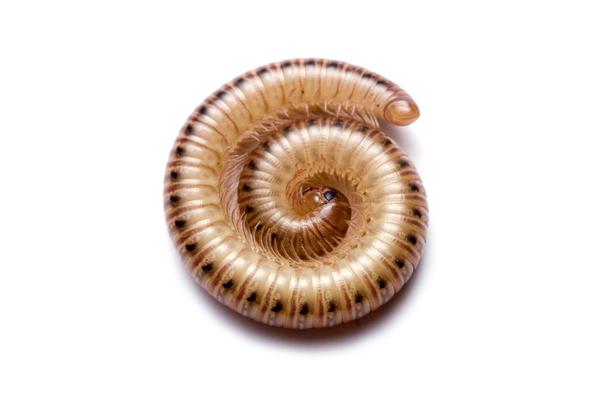Millipedes in Turf
en Español / em Português
El inglés es el idioma de control de esta página. En la medida en que haya algún conflicto entre la traducción al inglés y la traducción, el inglés prevalece.
Al hacer clic en el enlace de traducción se activa un servicio de traducción gratuito para convertir la página al español. Al igual que con cualquier traducción por Internet, la conversión no es sensible al contexto y puede que no traduzca el texto en su significado original. NC State Extension no garantiza la exactitud del texto traducido. Por favor, tenga en cuenta que algunas aplicaciones y/o servicios pueden no funcionar como se espera cuando se traducen.
Português
Inglês é o idioma de controle desta página. Na medida que haja algum conflito entre o texto original em Inglês e a tradução, o Inglês prevalece.
Ao clicar no link de tradução, um serviço gratuito de tradução será ativado para converter a página para o Português. Como em qualquer tradução pela internet, a conversão não é sensivel ao contexto e pode não ocorrer a tradução para o significado orginal. O serviço de Extensão da Carolina do Norte (NC State Extension) não garante a exatidão do texto traduzido. Por favor, observe que algumas funções ou serviços podem não funcionar como esperado após a tradução.
English
English is the controlling language of this page. To the extent there is any conflict between the English text and the translation, English controls.
Clicking on the translation link activates a free translation service to convert the page to Spanish. As with any Internet translation, the conversion is not context-sensitive and may not translate the text to its original meaning. NC State Extension does not guarantee the accuracy of the translated text. Please note that some applications and/or services may not function as expected when translated.
Collapse ▲Description
Millipedes are common occasional pests that sometimes invade buildings, particularly when the weather turns hot and dry. While millipedes sometimes enter in large numbers, they do not bite, sting, or transmit diseases, nor do they infest food, clothing or dry, structurally sound wood. Millipedes vary in both color and size. The most common species that invades buildings is the "garden millipede," which is brownish-black in color and about one inch long. Although millipedes are often called "thousandleggers," they actually have far fewer legs, but each body segment has two pairs of very short legs. When disturbed, millipedes often curl up into a "C" shape and remain motionless. They crawl slowly and protect themselves by secreting cyanide-like compound that has an unpleasant odor. Some people confuse millipedes with centipedes, which look somewhat similar. Centipedes have only one pair of legs per body segment and the legs are usually longer than those on millipedes. Centipedes also tend to move about more quickly than millipedes.
Cultural Control
The most effective, long-term measure for reducing entry of millipedes (and many other pests) is to reduce excess moisture and hiding places, especially near the foundation.
- Remove leaves, grass clippings, heavy accumulations of mulch, wooden boards, stones, boxes, and similar items laying on the ground beside the foundation. This does not mean you can't have mulch around the foundation; simply keep it 6-12 inches away from the wall. Use inorganic mulches such as gravel which will drain better.
- Prevent water from accumulating near the foundation, in basement walls or in the crawl space. Keep gutters and down spouts free of debris and use either splash guards or perforated pipe to reduce puddling. Homes with poor drainage may need to have foundation drains installed, or the surrounding ground contoured or sloped to redirect surface water away from the foundation.
- Repair leaking exterior water spigots and prevent water from puddling where there are drip lines from air conditioning units. Reduce the humidity in crawl spaces and basements by providing adequate ventilation, sump pumps, polyethylene soil covers, dehumidifiers, etc.
- Since millipedes thrive in the moist, dense thatch layer of poorly maintained turf, de-thatching the lawn and keeping the grass mowed close should make the lawn less suitable for millipedes. Over-watering may also contribute to millipede problems.
- Seal cracks and openings in the outside foundation wall, and around the sills of doors and basement windows. Install door sweeps on all exterior entry doors, and apply caulk along the bottom outside edge and sides of door thresholds. Seal expansion joints where outdoor patios, sunrooms and sidewalks abut the foundation. Expansion joints and gaps should also be sealed along the bottom of basement walls on the interior to reduce entry of pests and moisture from outdoors.
Chemical Control
Application of insecticides along baseboards and other interior living areas of the home do not really stop millipede invasions. Once indoors, millipedes end up in kitchens, living rooms, etc. and soon die from a lack of moisture. Remove them with a vacuum cleaner or broom. Applications of insecticide outdoors may help to reduce inward invasion of these and other pests. Treat along entryways, around crawl space doors, foundation vents and utility openings, and up underneath siding. Insecticides applied along the interior foundation walls of damp crawl spaces and unfinished basements may help temporarily. However, correcting such moisture problem is far more important in preventing millipede and other problems. Dust formulations may work well in some areas, but they should only be used in areas where children and pets will not come into contact with the chemical. Perimeter sprays may also help but are rarely 100% effective in stopping the millipedes. The key to successful chemical control is spray volume, i.e., that amount of diluted chemical that you apply over an area. The spray must penetrate the soil, not simply lightly coat the surface. The best means of application for homeowners is a garden hose attachment. Treat a 2-5 foot wide area of ground along the foundation in mulched, ornamental plant beds and grassy areas, as well as an 18-24 inch wide vertical band of the foundation wall. Spraying higher up on the house, such as treating soffits, overhangs, around windows, etc., may help; however, you need to watch but for chemical drifting down on to you.
| Insecticide and Formulation | Amount per 1,000 sq ft | Precaution and Remarks |
|---|---|---|
| bifenthrin* (Menace, Talstar, others) F, GC; G form also available | 0.25 to 0.5 fl oz | Use GC formulation for golf courses. |
| carbaryl* (Sevimol) (Sevin) 80 WSP | 1.5 to 3 oz 0.75 to 1.5 oz | |
| chlorpyrifos* (Dursban) 2 E, Pro | See label | For use on golf courses; check new label. |
| cypermethrin (Demon) TC | See label | |
| lambda-cyhalothrin* (Battle, Scimitar, Cyonara) | See label | Do not make applications within 20 feet of any body of water. No reentry until spray has dried. |
Refernces
- Controlling Millipedes in and Around Homes Household Pests. Waldvogel, M. 2005. NC State Extension Publication.
- Secretion of Benzaldehyde and Hydrogen Cyanide by the Millipede Pachydesmus crassicutis (Wood). Blum, M.S. and J. P. Woodring. 1962. Science Vol. 138 no. 3539: pp. 512-513.
- 2018 Pest Control for Professional Turfgrass Managers. Bowman, D. et al. 2017. NC State Extension Publication AG-408. 81 pp.
- NC State Extension Plant Pathology Publications and Factsheets
- NC State Eorticultural Science Publications
- North Carolina Agricultural Chemicals Manual
For assistance with a specific problem, contact your local Cooperative Extension center.





